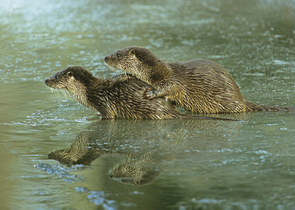The Journal is published by the Nature Conservation Agency of the Czech Republic in cooperation with the Cave Administration of the Czech Republic, the Krkonoše Mts. National Park Administration, the Bohemian Forest Mts. National Park Administration, the Podyjí National Park Administration and the The Bohemian Switzerland National Park Administration. It has been published since 1946.
cs / en
Nature Conservation 4/2011 — 3. 11. 2011 — Research, Surveys and Data Management — Print article in pdf
Větrovcová J., Poledníková K., Poledník L., Beran V. & Hlaváč V.: Database of Findings of Dead Euras

The article attempts to demonstrate the importance of data collected from found dead animal carcasses giving the example of Eurasian otters (Lutra lutra). Collecting dead otters and subsequent analyses of the carcasses have started in the Czech Republic at the local level in the 1990s.
The efforts were maximized and widened to the entire country during the last three years (2008–2010) when a database of all findings was established as a part of the research project focused on otter ecology and population modelling. The database has been maintained in both hard copy and electronic versions. The hard copy version consists of standard protocols filled out for each individual, electronic version is managed in Microsoft Office Access program, linked to a graphic file in Arc View with locations of the findings. The database includes information about: 1) circumstances of the finding (date, place, contact person, etc.), 2) state of the carcass, analyses carried out, 3) results of the analyses, and 4) where other reference body parts/bones are kept. Analyses performed on the carcasses include: dissection to assess cause of death, endoparasitological examination, analysis of genital organs, tooth cross-section to assess the age, genetic analyses, biometric measurements, gender determination (from genitalia or DNA analysis) and in the case of violent death suspicion also X-ray or chemical analyses to detect possible poison.
In addition, several interesting results generated from the collected data are presented, for example regarding proportion of different mortality causes, localization of dangerous sites on roads, age structure or genetic variability in the Czech otter population. Such information is very important in conservation for evaluating and planning conservation measures for the species and its habitats. Few examples of practical applications are also mentioned – e.g., constructed PVA models or proposal of adjustments to the construction of new road R52 in south Moravia. At the end, readers are called upon to cooperate and are given websites where more information (including instructions and contacts) can be found.

